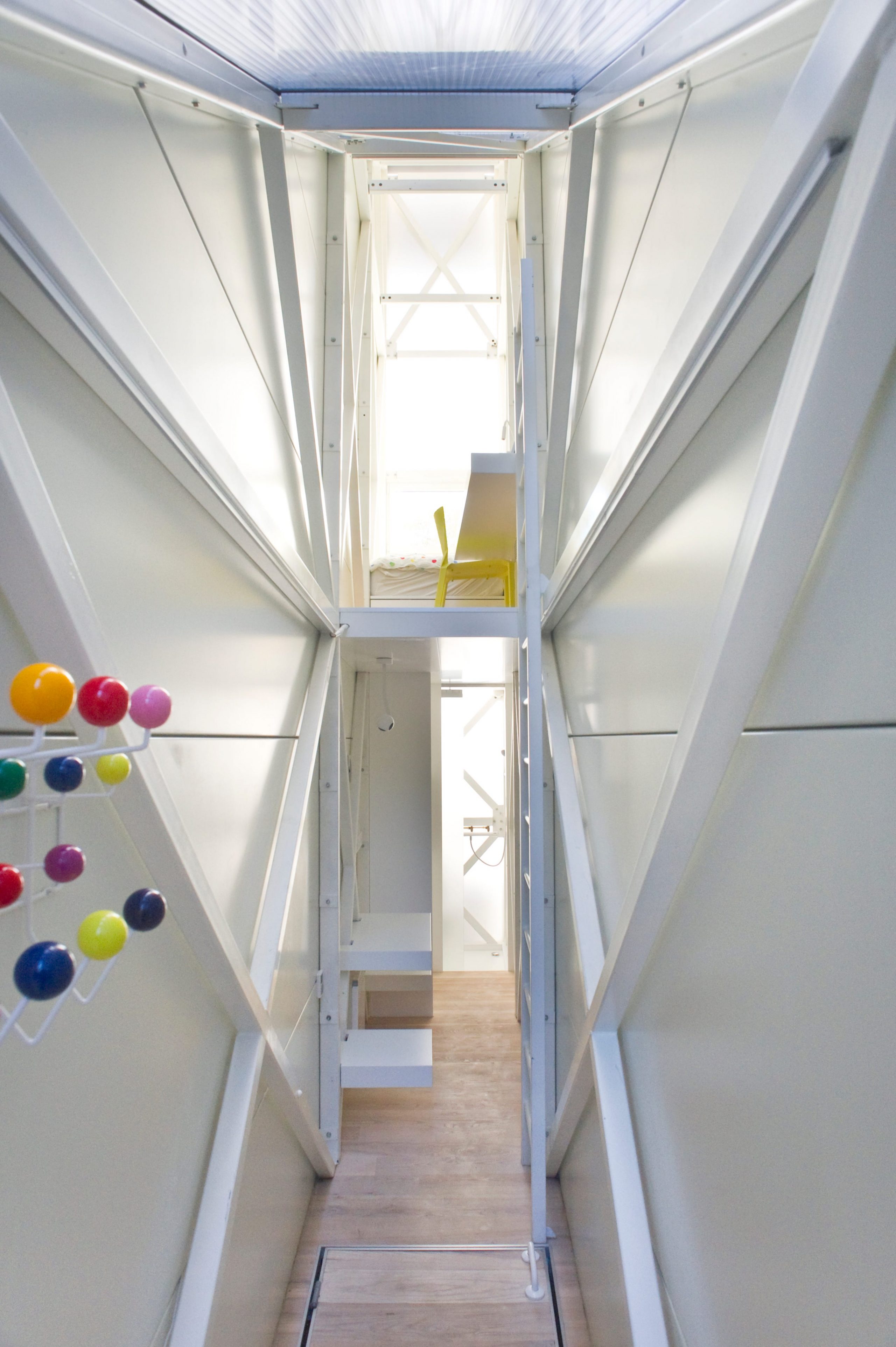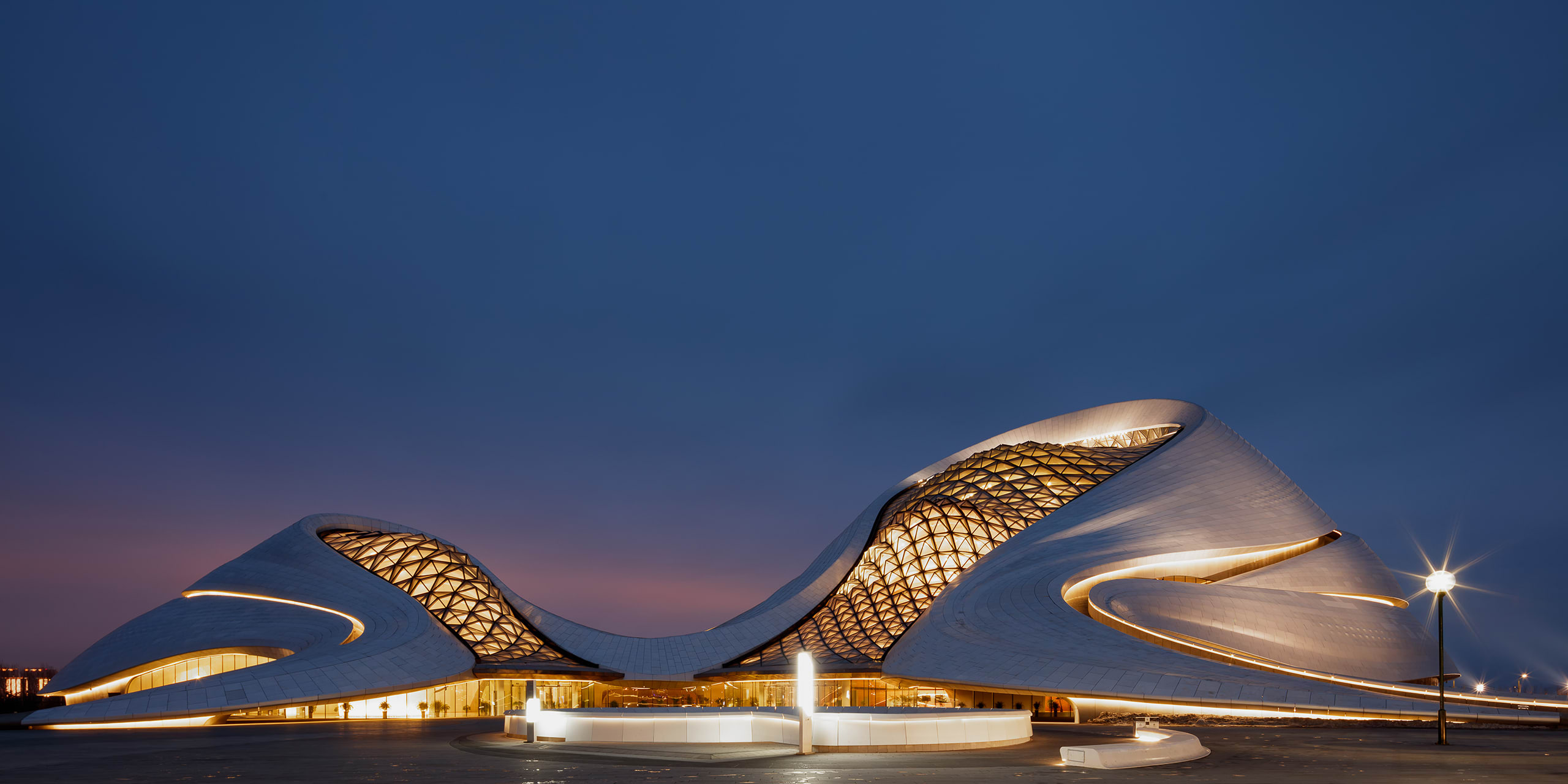Keret House

In constant pursuit of maximizing the world’s habitable spaces, developers are turning horizontal spaces into vertical dwellings in the face of soaring skyscrapers. However, in no other setting in the world is a structure’s height-to-width ratio as dramatic as that of the Keret House – the world’s skinniest house.
Designed by Polish architect Jakub Szczęsny, the Keret House is a 46-square feet house sitting on Warsaw’s “cushion of air,” a narrow infill tucked between two existing structures from two historical epochs. On one side lies the relics of a brick-laden building from World War II, while the other is a concrete cooperative meant to erase the city’s past political makeup.
Although it functions as a temporary residence for traveling writers and artists, it is legally classified as an “art installation” since it does not meet Polish housing codes.
The installation stands about 10 feet off the ground with a triangular metal frame structure of about 33 feet deep and 30 feet tall. At its narrowest point, it cramps at 28 inches while stretches at 48 inches on its widest point.
Its generally minuscule form led to innovative design solutions for space maximization, which allowed for a living room, bedroom, bathroom, and a kitchen cleverly stacked on a two-storey wedge.
Upon arrival, guests are welcomed with a flight of stairs leading to a trap door, which can be folded to unify the first-floor living space. Behind it is a kitchen complete with a customized sink, stove, and refrigerator. Going further reveals a small bathroom with a shower.
An innovative customized design deals with the house’s sewage, whereas power supply is obtained from the two buildings sandwiched between it.
A ladder running through the structure’s length connects the first and second floors together. Upstairs, a bedroom dominates the floor, adjacent to a small working space with a suspended desk against a bright yellow chair.
Contrary to its seemingly claustrophobic size, the house is surprisingly well-lit thanks to the polycarbonate materials used throughout its interiors. A semi-transparent plastic roof concludes the installation, where abundant natural light pours throughout the day.
By breathing life into a then-stagnant space, the Keret House gives hope on how overlooked liminal spaces as such can be reframed, reinterpreted, and transformed into an architectural masterpiece.
- Poland
- Jakub Szczęsny
- http://kerethouse.com/
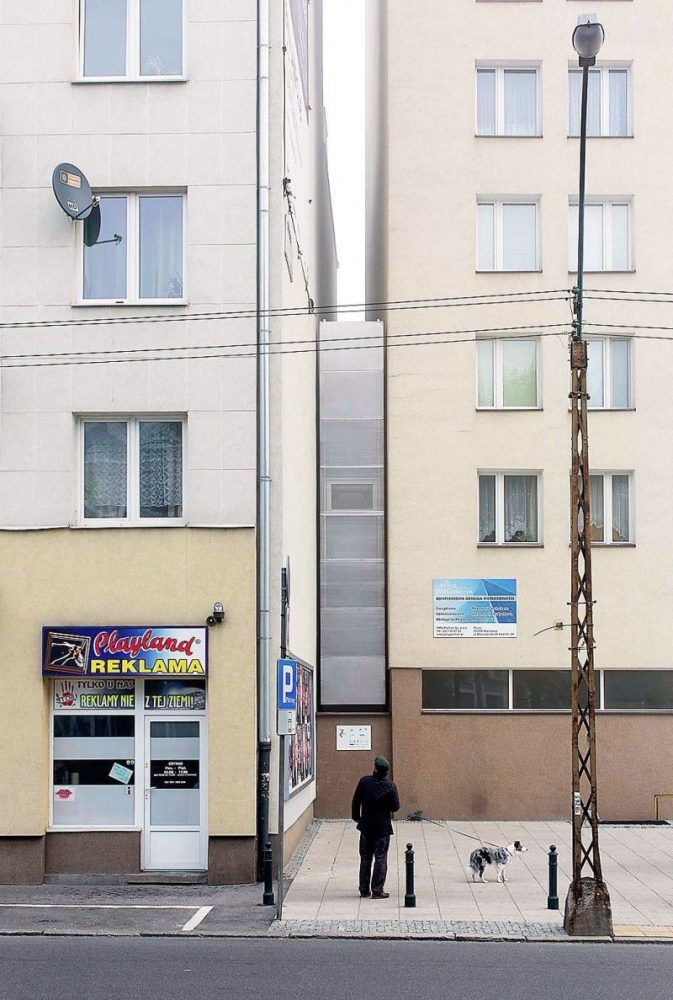

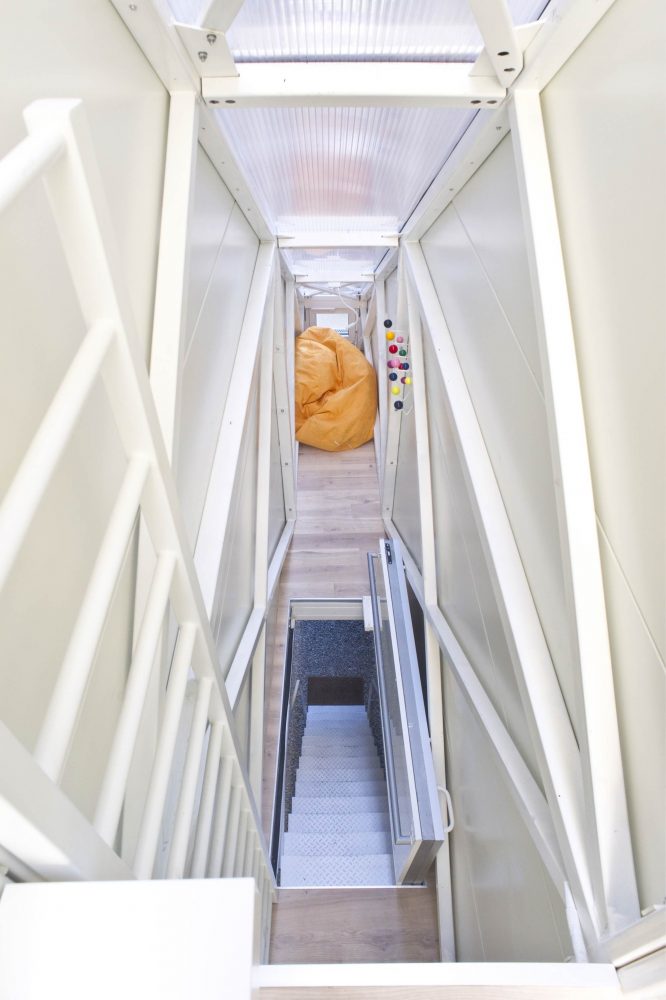
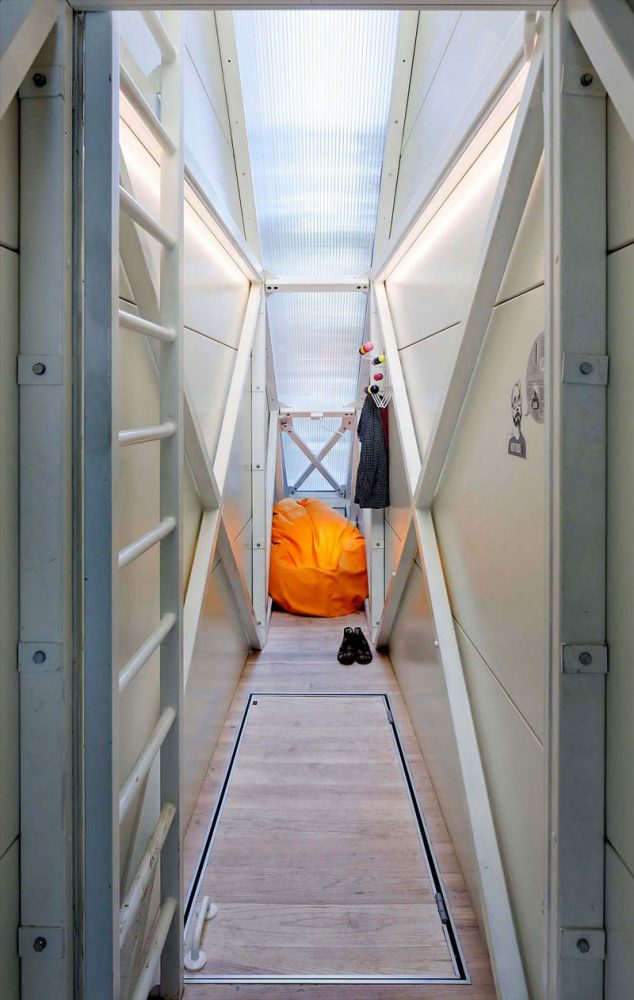
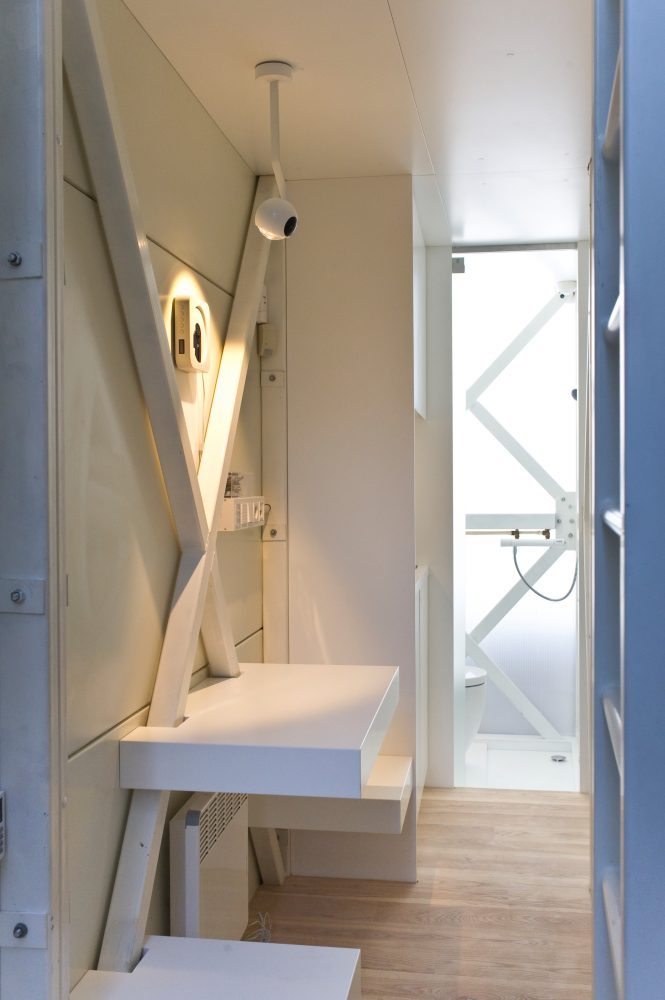
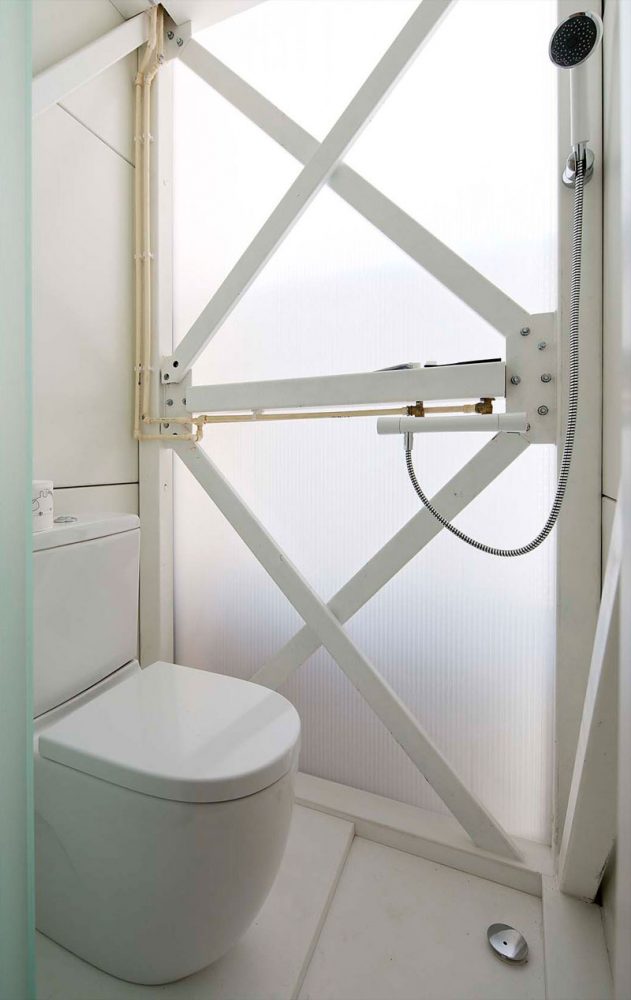
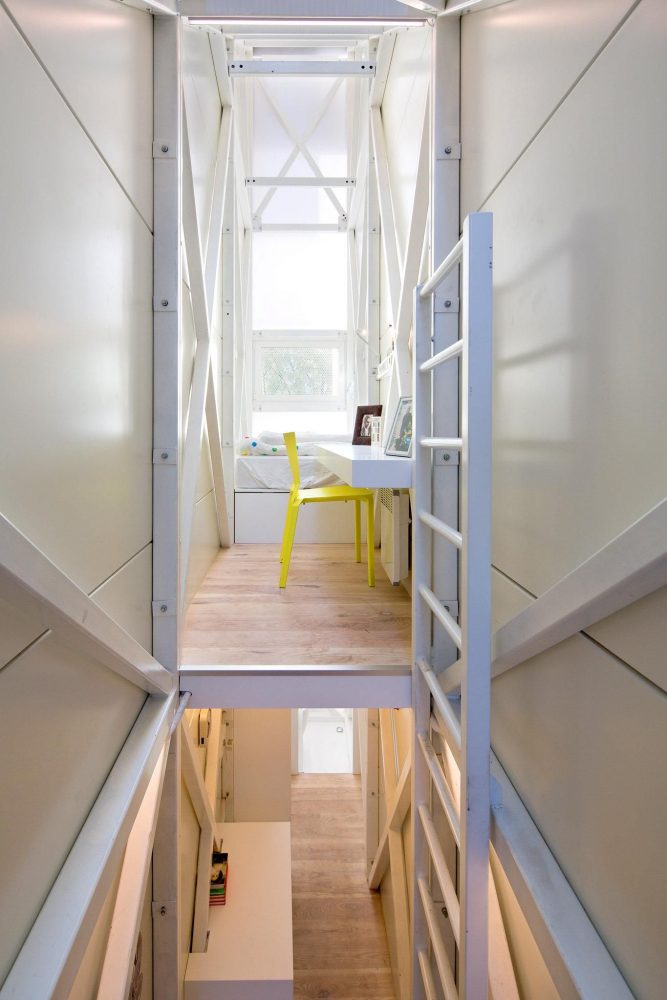
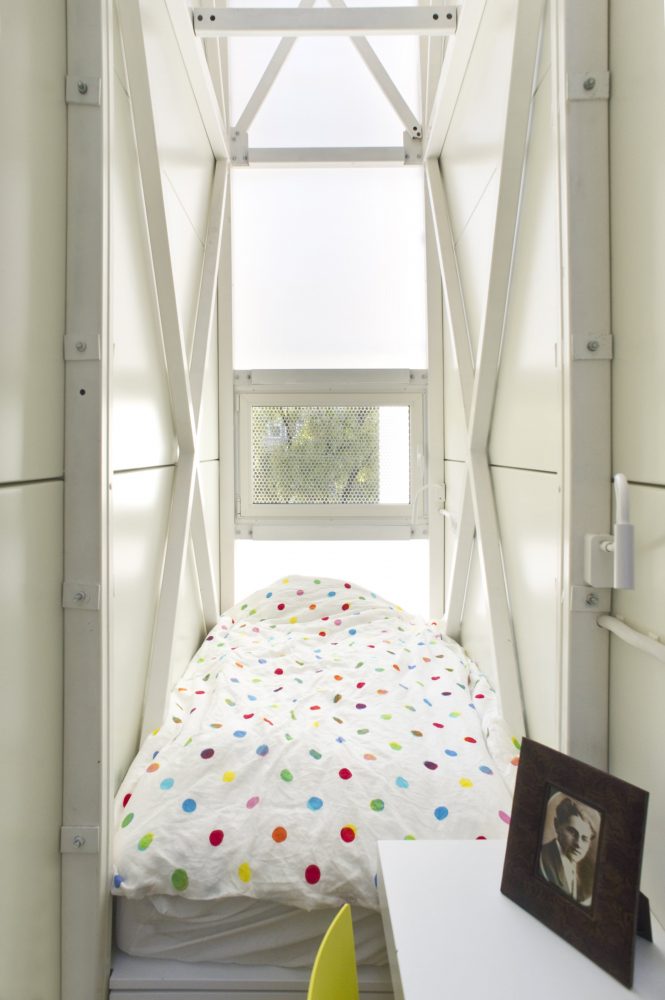
Category Residential
